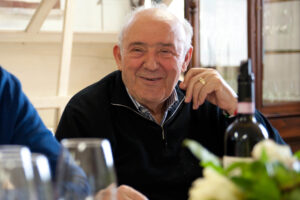
A volcano and the sea, millions of years ago, forming the territory. Then wine, born along the Via Francigena, “not a road, but an idea that formed European culture, and along which, from the year 1000 onward, came Vernaccia di San Gimignano, Moscadello di Montalcino, when Brunello di Montalcino did not yet exist, and then Orvieto, Est Est Est, Bianco di Pitigliano. All white because it was going towards small glaciation, and only white grapes ripened, around the territories and monasteries that are the ones that made and saved European viticulture in the Middle Ages”. Professor Attilio Scienza starts from a cross-section of history to talk about the future, as is often the case, at “Orvieto di Vino”, a kermesse of the Consortium led by Vincenzo Cecci, staged today, May 29, wanted to tell about the beauty and richness of the territory. Where it dominates the story of the ancient wine Orvieto, which one of the legends of Italian literature Gabriele D’Annunzio called “Italy’s sun in a bottle”, and which was already loved by the Emperors of Rome, and then by Popes, such as Paul III Farnese and Gregory XVI, and which great Renaissance artists such as Pinturicchio and Signorelli themselves asked for as a life annuity between the late 15th and 16th centuries, in the work on the frescoes of the masterpiece of Romanesque-Gothic art that is the Duomo. “It is a territory that must be told, because it can say so much, and because storytelling is no longer a choice, but an obligation. Today the territory of Orvieto is divided into three different parts, a volcanic western part, an eastern and more “marine” part as a result of what happened millions of years ago, when Tuscany was still an archipelago and instead of the Po Valley there was a large gulf, and more fluvial northern part along the Paglia River. Additional Geographical Units need to be developed to tell the story of the diversity of the area and the characteristics of the wines that come from it, the narrative of Orvieto needs to be developed, and alliances between producers are needed to challenge world markets, and revitalize the area, not just the city, as a tourist destination”.
We are talking about a territory of 1,965 hectares planted with vines, from which 11 million bottles a year are born, anchored by grapes such as Grechetto and Procanico, and where the small denomination of Rosso Orvietano Doc is also carving out a place for itself, for now just 43 hectares for 30,000 bottles a year. And of an area where large industrial realities coexist with many small wineries and wine artisans, with historic names such as Barberani, and where the brightest star shines, which is that of Antinori’s Castello della Sala, which has brought luster to the denomination. Which, from its history, looks to the future: “we want to speak above all to young people, to make them know Orvieto wine and the territory, telling them more and more about what we are and what we do, investing in quality, communication and research”, the president of the Consortium, Vincenzo Cecci, told WineNews. Charting the path for tomorrow for one of Umbria’s most important wines.
Copyright © 2000/2026
Contatti: info@winenews.it
Seguici anche su Twitter: @WineNewsIt
Seguici anche su Facebook: @winenewsit
Questo articolo è tratto dall'archivio di WineNews - Tutti i diritti riservati - Copyright © 2000/2026